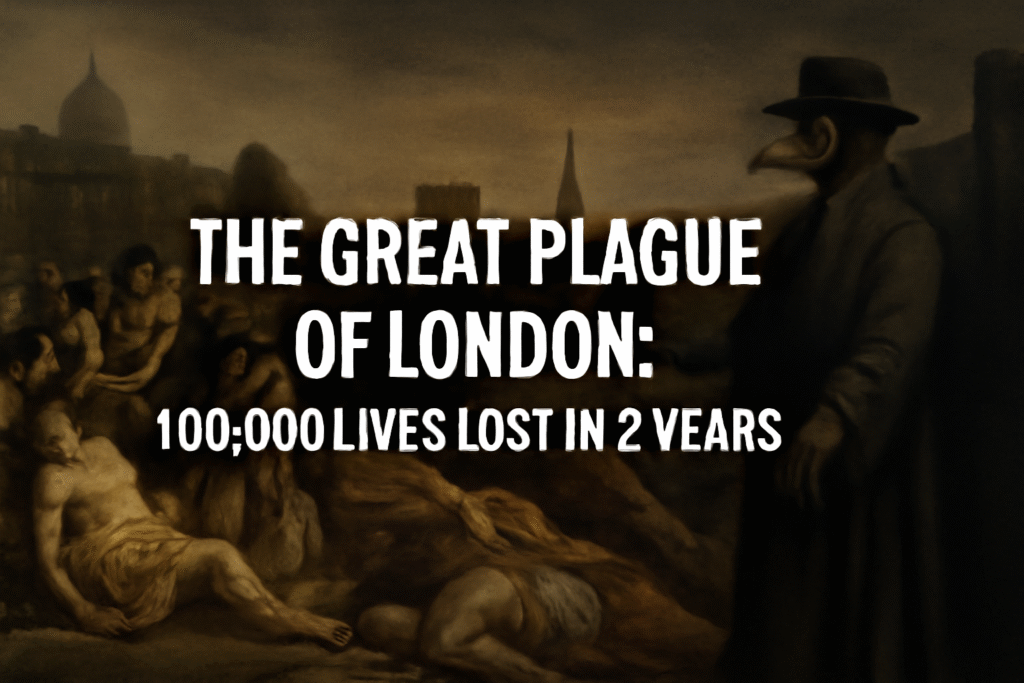Let’s take a journey back in time to a period in England’s history that still sends chills down the spine—the years 1665 and 1666.
During these two fateful years, the city of London was gripped by a mysterious and horrifying disease. People began developing dark spots on their bodies, followed by a persistent cough and, ultimately, bleeding from the mouth. In just a matter of days, the infected would die.
This epidemic claimed over 100,000 lives—around 15% of London’s population at the time. Known to history as The Great Plague of London, it stands as one of the deadliest outbreaks the city has ever faced.
The Silent Killers: Rats and Bacteria
The plague was primarily caused by black rats, common in the filth-ridden streets of 17th-century London. These rodents carried a bacterium known as Yersinia pestis. When these rats bit humans, the bacteria entered their bloodstream and lungs, spreading infection rapidly.
Worse still, the bacteria were highly contagious and could spread from person to person, intensifying the death toll. The lack of sanitation and the dense population only accelerated the outbreak’s severity.
Medicine’s Helplessness and Public Panic
In the 1600s, medical science was still in its infancy. Doctors had no idea how to treat or even understand the plague. Desperate to protect themselves, they wore strange, bird-like plague doctor costumes—an eerie sight designed more to scare than to heal.
As the death toll surged, panic spread. The wealthy fled the city, leaving behind the poor who could not afford to escape. Entire neighborhoods became ghost towns. Even trade between London and other parts of Britain and Europe was halted in an attempt to contain the outbreak.
The Forgotten Graves Beneath the Streets
As bodies piled up, the city ran out of space to bury the dead. Initially buried in churchyards, the sheer number of corpses led to the digging of mass graves across various parts of London. Thousands were laid to rest in fields and open pits, many of which were later built over.
Even today, the remains of plague victims lie beneath modern London. In some areas, signs warn that human remains are buried below. A particularly revealing moment came during the construction of the Elizabeth Line railway, where over 4,000 human skeletons were unearthed from a single site.
Misguided Responses and a Lesson in Irony
In an effort to control the plague, authorities began killing stray cats and dogs, believing they were spreading the disease. Ironically, cats were natural predators of the rats responsible for the outbreak, and their absence may have worsened the situation.
People infected with the disease were locked inside their homes, sometimes with entire families quarantined together. Some died without even a chance to say goodbye to their loved ones.
A Chilling Reminder of Vulnerability
The Great Plague of London reminds us how vulnerable humanity once was to diseases we now understand better. With no antibiotics, no vaccines, and limited knowledge, Londoners could only wait in fear as death spread like wildfire.
Fast forward to today, and modern pandemics like COVID-19 remind us how far medical science has come—yet how familiar panic, isolation, and death still are.
If you enjoyed this chilling look into history, explore more stories like this on our site or check out London’s dark historical chapters on Wikipedia.
